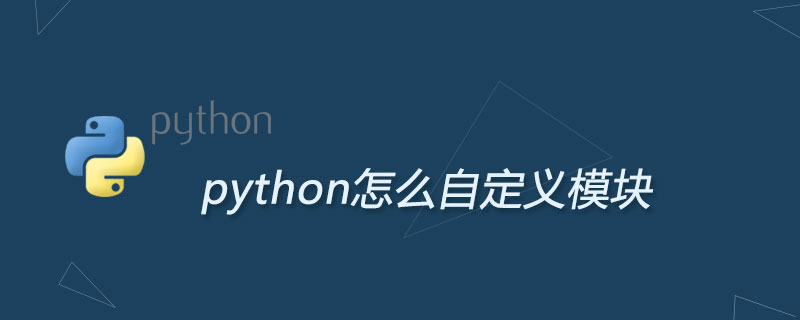

The Python module is a Python file, ending with .py, which includes Python object definitions and Python statements, making Python code segments more logical and easier to use. Easier to understand. Since Python modules have so many benefits, how to reference Python modules?
Define module
Create a new folder to store the module to be defined, and then create a py file under the folder. This py file is the module we define
import statement
Custom modules can be introduced using the import statement. The steps are to import the module first, and then call the functions contained in the module. Custom modules can be imported The module is placed in the current directory to facilitate interpreter path search. The following is an example of importing a custom hello.py module and calling the World function:
Import module
import hello
Now you can call the functions contained in the module
support.print_func("World")The output result is: Hello World!
The above example can also be implemented using the from...import method, which refers to importing the specified part from a module into the current namespace. The above function can be written as:
from hello import World
If you want to All contents in the module are imported into the current namespace. You can use the from...import* method. The specific example is as follows:
from hello import *
Also note that when a module is to be imported, the Python interpreter will determine the location of the module. To search, the specific search order is as follows:
1. Current directory
2. If it is not in the current directory, Python will search every directory under the shell variable python path
3. If neither is found, Python will check the default path
Related learning recommendations: python video
The above is the detailed content of How to customize modules in python. For more information, please follow other related articles on the PHP Chinese website!
 What is the use of docker image?
What is the use of docker image?
 How to find the location of a lost Huawei phone
How to find the location of a lost Huawei phone
 Clean the registry
Clean the registry
 How to set offline status on Douyin
How to set offline status on Douyin
 Oracle view table operation history
Oracle view table operation history
 Introduction to carriage return and line feed characters in java
Introduction to carriage return and line feed characters in java
 parseint function usage
parseint function usage
 What should I do if the docker container cannot access the external network?
What should I do if the docker container cannot access the external network?